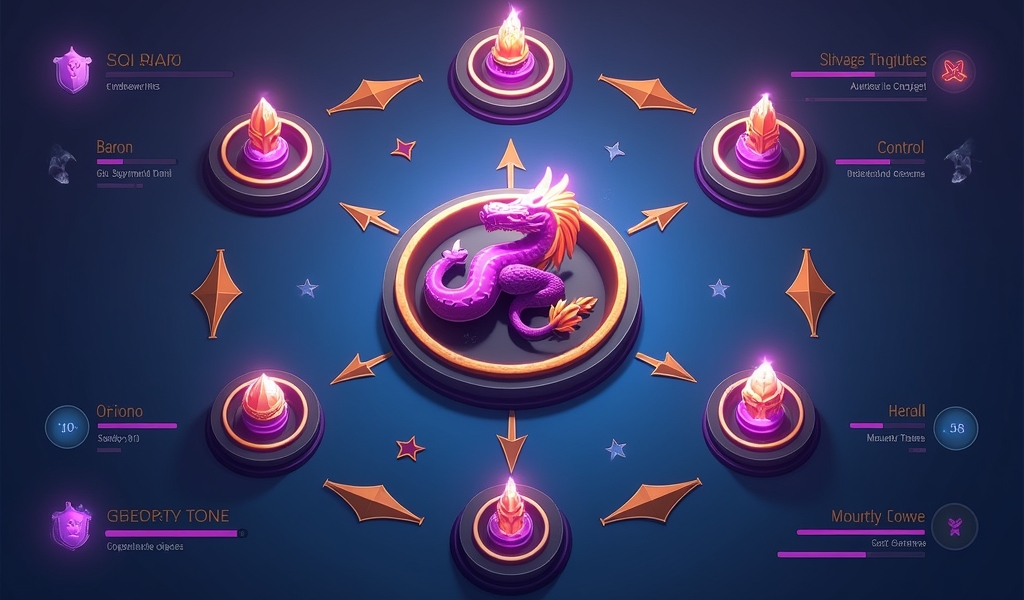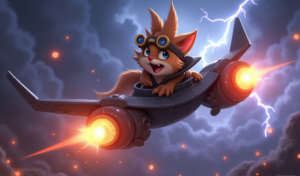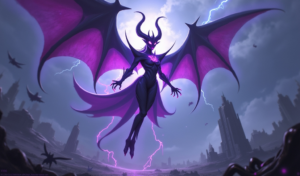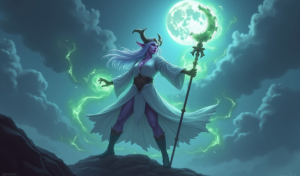Overview
Learning to improve objective control in League of Legends is essential for consistent victories, requiring mastery of vision dominance, timing awareness, and team coordination around key map objectives. This comprehensive guide outlines seven professional techniques for dominating objectives, including establishing lane priority, tracking enemy junglers, knowing when to trade objectives, and perfecting your setup – all crucial skills that directly impact win rates and ranked climbing potential.
Table of Contents
In the competitive world of League of Legends, mastering objective control can be the difference between climbing the ranked ladder and being stuck in ELO hell. Whether you’re trying to secure Dragon, Baron, or simply maintain pressure around the map, learning to improve objective control is essential for consistent victories. This comprehensive guide will walk you through seven proven techniques that even professional players use to dominate objectives and carry games.
Understanding Objective Control in League of Legends
Objective control refers to your team’s ability to secure important neutral objectives like Dragons, Rift Heralds, Baron Nashor, and towers. These objectives provide game-changing buffs and advantages that can snowball into victories. To improve objective control, you need strategy, coordination, and precise timing—not just mechanical skill.
Many players focus solely on kills and CS, overlooking how crucial objective control is to winning games. According to Riot Games’ own statistics, teams that secure the first dragon have approximately a 60% win rate across all ranks. That’s a significant advantage that compounds throughout the game.
Let’s dive into the seven techniques that will help you improve objective control and climb the ranks.

Technique 1: Establish Vision Dominance
Vision control is the foundation of superior objective control. Without proper vision, you’re essentially playing blind while your enemies can see your every move. To improve objective control, you must first master vision placement.
Here’s how to establish vision dominance:
- Place deep wards in the enemy jungle 1-1.5 minutes before an objective spawns
- Use control wards to deny enemy vision around key objectives
- Clear enemy wards with sweepers or control wards before starting objectives
- Coordinate with your support to create vision traps in brushes near objectives
Remember that vision isn’t just about placing wards—it’s about denying enemy vision too. A well-timed sweeper can make the difference between a clean objective take and a disastrous teamfight. As you improve map awareness, you’ll naturally become better at vision control.
Pro players typically place between 0.8-1.2 wards per minute. While that might seem excessive, aiming for at least 0.6 wards per minute will significantly improve your objective control capabilities.
Technique 2: Master Objective Timing Awareness
Timing is everything when it comes to objectives. Being aware of spawn timers and planning your map movements accordingly can give you a massive advantage. To improve objective control, you must internalize these timings until they become second nature.
Key objective timers to remember:
- Dragon: Spawns at 5:00, respawns 5 minutes after being slain
- Rift Herald: Spawns at 8:00, respawns 6 minutes after being slain (despawns at 19:45)
- Baron Nashor: Spawns at 20:00, respawns 6 minutes after being slain
- Elder Dragon: Replaces regular dragons after four drakes have been taken, respawns 6 minutes after being slain
Set timers in chat or use pings to alert your team of upcoming objectives. A simple “Drake 1 min” can help your team prepare properly. Many higher-ranked players will start making their way toward an objective area 45-60 seconds before it spawns.
Additionally, time your recalls and rotations around these spawns. If dragon is spawning in 30 seconds, don’t start a lengthy trade in top lane that might prevent you from teleporting down. Experienced jungle coaches often emphasize planning your entire clear around objective timers.
Technique 3: Develop Priority Lanes Before Objectives
Lane priority is crucial for successful objective control. A lane with priority is one where your team’s laner can rotate to an objective before their opponent without losing significant resources. To improve objective control, you must coordinate with your team to establish priority in the lanes adjacent to upcoming objectives.
How to develop lane priority:
- Push the wave before objective timers so you can roam first
- Ask your jungler for help pushing out a wave if you’re behind
- Use teleport strategically to gain priority when you otherwise wouldn’t have it
- Communicate with your team about which lanes need priority for upcoming objectives
For example, before a dragon spawn, your mid and bot lanes should ideally have priority, allowing them to move first if a fight breaks out. Similarly, top lane priority is important for Rift Herald control. Mastering wave management is essential for consistently having priority when it matters.
Remember that if you don’t have priority, forcing an objective can be extremely risky. Sometimes it’s better to give up an objective than to contest it without proper lane setup.
Technique 4: Improve Team Coordination
Even perfect vision and timing won’t help if your team isn’t on the same page. Improving objective control requires clear communication and synchronized execution. This can be challenging in solo queue, but a few simple strategies can make a huge difference.
Effective ways to coordinate with your team:
- Use ping combinations to communicate intent (On My Way + Objective ping)
- Type clear, concise messages like “Dragon after this wave”
- Assign roles before an objective fight (e.g., “I’ll zone, you start the dragon”)
- Use Baron or Dragon call votes in the client
The most successful teams in League of Legends aren’t necessarily the most mechanically skilled—they’re often the best coordinated. According to LoL Esports, effective shotcalling and team coordination are among the most valued skills in professional play.
If you’re serious about climbing, consider finding a reliable online LoL coach who can help you develop your communication skills and team coordination strategies.

Technique 5: Track the Enemy Jungler
One of the most effective ways to improve objective control is by knowing where the enemy jungler is at all times. The jungler is typically the player with smite and therefore the biggest threat to stealing objectives. Keeping tabs on their movements gives you a massive advantage in objective timing.
How to track the enemy jungler effectively:
- Note their starting position and predict their early clear path
- Place deep wards at common jungle entrances and buff locations
- Track when enemy buffs and camps respawn
- Watch for the jungler appearing in lanes and mark their last known position
If you know the enemy jungler is on the top side of the map, that might be the perfect time to sneak a dragon. Similarly, seeing them recall with low health could signal a window for a quick Baron attempt.
Many high-level junglers recommend watching the replay from the enemy jungler’s perspective after games to better understand their patterns. This practice will dramatically improve your laning phase safety as well.
Technique 6: Know When to Trade Objectives
Sometimes the smartest play isn’t to contest an objective but to trade it for something else on the map. Understanding which objectives are worth trading for others is a crucial skill to improve objective control overall.
Common objective trades to consider:
- Trading Rift Herald for first Dragon (often good for early-game comps)
- Taking multiple towers while the enemy team secures Baron
- Securing Soul Point while giving up a Baron (situationally valuable)
- Trading a regular dragon for Herald when playing for early game advantage
The key is to never give up objectives for free. If the enemy team is clearly going to secure an objective and you can’t contest it, make sure you’re getting value elsewhere on the map. This might mean pushing waves, taking towers, stealing jungle camps, or setting up vision for the next objective.
As professional League coach services often emphasize, sometimes the best way to improve objective control is knowing when to concede one objective to secure an advantage elsewhere.
Technique 7: Perfect Your Setup and Preparation
The final technique to improve objective control focuses on the setup and preparation before you even attempt to take an objective. The work you do in the 30-60 seconds before starting an objective often determines whether you’ll secure it successfully.
Essential setup elements include:
- Clear all nearby enemy wards
- Position carries in safe spots with escape routes
- Have your tank or engage champion zone the enemy team
- Ensure your jungler is positioned to secure with smite
- Prepare ability combinations to burst the objective
The preparation phase also includes managing your resources properly. Having ultimates available, sufficient mana, and appropriate health levels before starting an objective fight is crucial. Expert LoL coaching often focuses on these preparation details that many players overlook.
Remember that a rushed objective is a risky objective. Taking an extra 10 seconds to set up properly can be the difference between securing an objective cleanly and throwing the game with a failed attempt.
Conclusion: Putting It All Together
Mastering objective control doesn’t happen overnight, but consistently applying these seven techniques will yield impressive results. To improve objective control, focus on one technique at a time until it becomes second nature, then move on to the next.
Remember that objective control is ultimately about calculated risk management. Sometimes the right call is to go for a sneaky solo dragon, while other situations call for a full 5v5 teamfight. Developing this game sense comes with experience and intentional practice.
By implementing these strategies—establishing vision dominance, mastering timing awareness, developing priority lanes, improving team coordination, tracking the enemy jungler, knowing when to trade objectives, and perfecting your setup—you’ll see a dramatic improvement in your ability to control objectives and, consequently, win more games.
If you’re serious about climbing the ranks in League of Legends, consider investing in professional League of Legends coaching to accelerate your learning process. The difference between an average player and a great one often comes down to their understanding of objective control.
Now get out there, apply these techniques, and watch as you improve objective control and climb the ranks!
Frequently Asked Questions
Which objective is most important in League of Legends?
Dragon Soul is typically considered the most important objective due to its game-changing permanent buffs, though Baron Nashor provides the strongest temporary power spike for pushing advantages and closing out games.
How do I improve objective control as a support?
As a support, focus on establishing vision control around objectives 1-2 minutes before they spawn, clearing enemy wards with sweepers, and coordinating with your jungler to time engages properly.
What’s more important: Dragon or Rift Herald?
Early game, Rift Herald often provides more immediate value through tower plates and first tower gold, while dragons offer scaling advantages for mid-late game. The choice depends on your team composition and win condition.
How do I prevent objective steals?
To prevent steals, ensure you have vision control of approach paths, track the enemy jungler, burst the objective properly at low health, and position your jungler to smite securely without enemy interference.
When should I start prioritizing Baron Nashor?
Baron should become a priority after the 20-minute mark when your team has created a numbers advantage (through picks or winning a skirmish), when you have reliable damage to take it quickly, and when you’ve established proper vision control around the pit.




